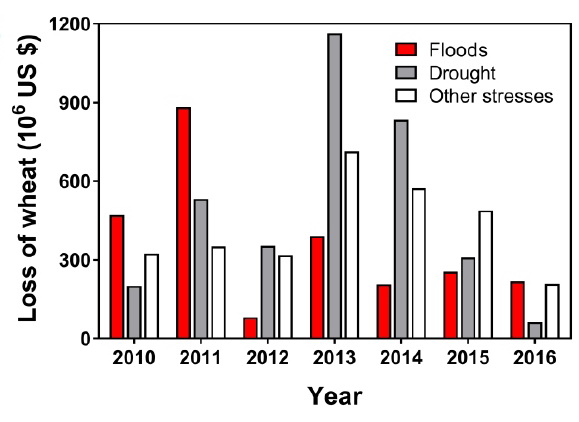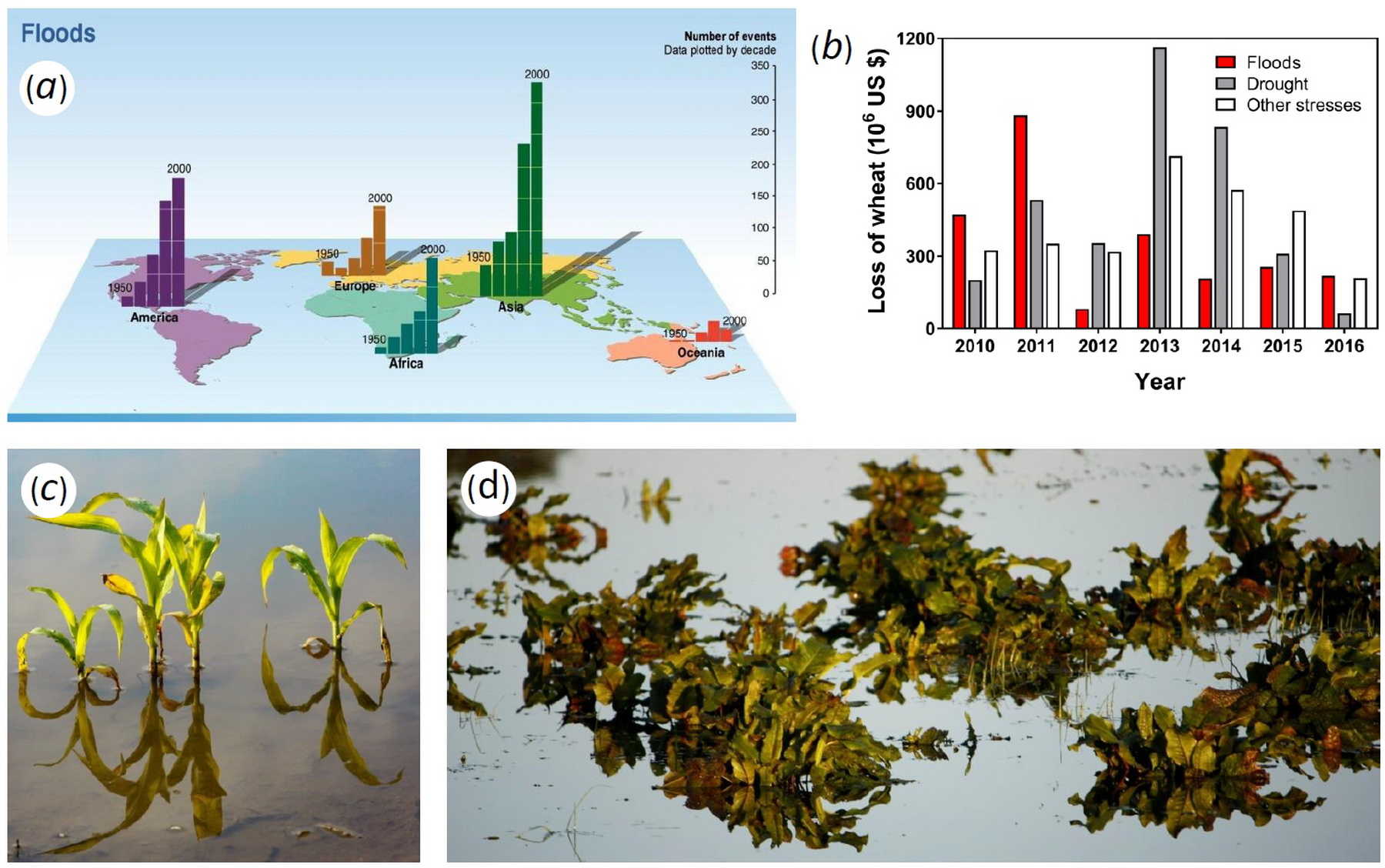Flood tolerance of dryland crops
Believe it or not – climate changes are already a FACT! The graphics to the right show the number of flood per decade since the 1950s and the trend is clear… Since 1950, the world has experienced a dramatic increase in flood events that has lead to tragic loss of human life, but also to flood disasters impacting on natural vegetation and crops. Based on insurance enumerations from the past 7 years in the U.S., mean annual losses of wheat production due to floods amount 360 million US $. In 2010, 2011 and 2016 losses caused by floods even exceeded those caused by drought or other natural disasters. The calamities inflicted by floods upon plants call for action, and since the challenges span several disciplines the road map to solutions should be cross-disciplinary as well.
Flooding-induced low oxygen conditions re-orchestrate plant metabolism to manage energy production and consumption. In general, plants elevate starch and sucrose catabolism, glycolysis and ethanolic fermentation to increase substrate-level production of ATP, and energy production can be further stimulated through alanine metabolism to succinate. Moreover, many plants are also able to reduce energy consumption and growth upon low oxygen conditions.
Most projects within this exciting topic have an eco-physiological focus, and we have excellent facilities in our glass house and in the constant temperature rooms to simulate flood events on various types of dryland crops. All projects can be offered both at BSc and MSc level.
Flooding of dryland crops is a global issue - come and help us to better understand how various crops respond to excess water!
See the list of publications for articles on this exciting topic!
Contact Ole Pedersen for more information.



